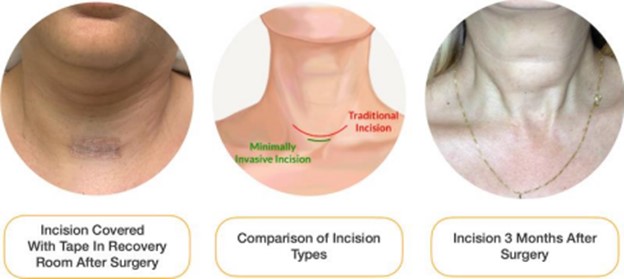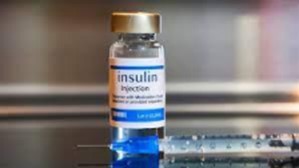RN Medsurg
RN ATI Medsurg
Total Questions : 35
Showing 10 questions Sign up for moreA nurse is caring for a client who is 1 day postoperative following a thyroidectomy and reports severe muscle spasms of the lower extremities. Which of the following actions should the nurse take?

Explanation
A. Checking the pedal pulses is important for assessing circulation, but it may not directly address the cause of the muscle spasms. In this case, addressing the electrolyte imbalance is a higher priority.
B. Requesting a relaxant might provide temporary relief for muscle spasms, but it does not address the potential underlying cause. It's important to identify and treat the root issue.
C. Correct. Severe muscle spasms in a client post-thyroidectomy could indicate hypocalcemia, as the parathyroid glands, which regulate calcium levels, can be affected during the surgery. Verifying the most recent calcium level will help determine if this is the cause.
D. Administering an oral potassium supplement addresses a different electrolyte imbalance (hypokalemia), which is not typically associated with muscle spasms following a thyroidectomy. Calcium levels are more relevant in this context.
A nurse is caring for an adolescent client who has a long history of diabetes mellitus and is being admitted to the emergency department confused, flushed, and with an acetone odor on the breath. Diabetic ketoacidosis is suspected. The nurse should anticipate using which of the following types of insulin to treat this client?

Explanation
A. NPH insulin: NPH insulin, also known as Neutral Protamine Hagedorn, is an intermediate acting insulin. It has a slower onset of action and a longer duration compared to regular insulin. It is not the best choice for treating diabetic ketoacidosis (DKA) because it does not act quickly enough to lower dangerously high blood glucose levels in this acute situation.
B. Insulin glargine: Insulin glargine is a long-acting basal insulin. It has a slow, steady release and provides a consistent level of insulin over an extended period. Like NPH insulin, it is not suitable for rapidly lowering blood glucose levels in a DKA emergency.
C. Insulin detemir: Insulin detemir is another long-acting basal insulin similar to glargine. It has a slow onset and provides a sustained release of insulin. It is not the first-line choice for treating DKA due to its slower action.
D. Regular Insulin: Regular insulin, also known as short-acting or fast-acting insulin, has a rapid onset of action. When administered intravenously, it can quickly lower blood glucose levels. This makes it the preferred choice for treating diabetic ketoacidosis (DKA) where prompt action is essential to correct the severe hyperglycemia and associated metabolic imbalances.
A nurse is caring for a client who has chronic hypothyroidism. For which of the following conditions should the nurse monitor?
Explanation
A. Photophobia is not typically associated with hypothyroidism. It can be a symptom of conditions affecting the eyes, such as certain infections or ocular disorders.
B. Exophthalmos is a protrusion of the eyeballs and is a characteristic symptom of hyperthyroidism (overactive thyroid), not hypothyroidism (underactive thyroid).
C. Correct. Lethargy is a common symptom of hypothyroidism. It is characterized by extreme tiredness, sluggishness, and lack of energy.
D. Goiter is an enlargement of the thyroid gland and can occur in both hyperthyroidism and hypothyroidism. However, it is not a direct symptom; it is a physical finding that can be associated with thyroid disorders.
A nurse is assessing a client who has hypoparathyroidism. Which of the following findings should the nurse expect?
Explanation
A. Flaccid muscles are associated with conditions like hypokalemia, not hypoparathyroidism. In hypoparathyroidism, there is a deficiency of parathyroid hormone (PTH), which leads to low calcium levels and can result in muscle spasms and tetany, not flaccid muscles.
B. While anorexia can occur in clients with various health conditions, it is not a specific finding associated with hypoparathyroidism.
C. Correct. Hypoparathyroidism is characterized by low levels of parathyroid hormone (PTH), which leads to low calcium levels in the blood. This can cause symptoms such as numbness, tingling, and muscle cramps, especially in the extremities.
D. A positive Chvostek's sign is associated with hypocalcemia, which can be caused by hypoparathyroidism. Therefore, a negative Chvostek's sign would not be an expected finding in a client with hypoparathyroidism.
A patient is scheduled for surgery to remove a tumor of the anterior pituitary. Which hormone should the nurse expect to be affected by this surgery? Select all that apply.
Explanation
A. Thyroid stimulating hormone (TSH): The anterior pituitary gland secretes TSH, which regulates the thyroid gland's function. Surgery on the anterior pituitary can potentially disrupt the production and regulation of TSH.
B. Prolactin: The anterior pituitary gland also produces prolactin. Surgery on the anterior pituitary can affect prolactin production.
C. Oxytocin: Oxytocin is produced by the posterior pituitary, not the anterior pituitary. Surgery on the anterior pituitary would not directly impact oxytocin production.
D. Gonadotropin hormones: These include follicle-stimulating hormone (FSH) and luteinizing hormone (LH), which are important for reproductive function. The anteriorpituitary secretes these hormones, so surgery on the anterior pituitary can impact their production.
E. Adrenocorticotropic hormone (ACTH): ACTH is essential for the stimulation of cortisol release from the adrenal glands. The production of ACTH is regulated by the anterior pituitary, so surgery in this area can affect ACTH levels.
A nurse is assessing a client who has thyrotoxicosis after taking too high of a level of levothyroxine. Which of the following manifestations should the nurse expect?
Explanation
A. Drowsiness is not a typical manifestation of thyrotoxicosis. Instead, individuals with thyrotoxicosis often experience restlessness and anxiety due to excessive thyroid hormone levels.
B. Dry skin is more commonly associated with hypothyroidism (insufficient thyroid hormone levels), rather than thyrotoxicosis (excessive thyroid hormone levels).
C. Bradycardia (slower than normal heart rate) is a symptom of hypothyroidism, not thyrotoxicosis. In thyrotoxicosis, tachycardia (an abnormally rapid heart rate) is a common finding.
D. Correct. Heat intolerance is a classic symptom of thyrotoxicosis. Excessive thyroid hormone levels can lead to an increased metabolic rate, making individuals more sensitive to heat.
A nurse is assessing a client who is admitted with hyperthyroidism. The client reports a weight loss of 5.4 kg (12 lb) in the last 2 months, increased appetite, increased perspiration, fatigue, menstrual irregularity, and restlessness. Which of the following actions should the nurse take to prevent a thyroid crisis?
Explanation
A. Administering aspirin for hyperthermia is not a standard intervention for hyperthyroidism. Hyperthermia can occur in severe cases of hyperthyroidism, but the primary intervention is to address the underlying thyroid dysfunction and provide supportive care.
B. Keeping the client NPO (nothing by mouth) is not directly related to preventing a thyroid crisis in hyperthyroidism. It may be necessary for certain pre-operative preparations or if the client is undergoing specific procedures, but it does not address the prevention of a thyroid crisis.
C. While monitoring for signs of hypocalcemia is important in some cases of thyroid dysfunction, it is not the primary action to prevent a thyroid crisis. In hyperthyroidism, the focus is on managing excessive thyroid hormone levels.
D. Correct. Providing a quiet, low-stimulus environment is a crucial nursing intervention for clients with hyperthyroidism. They can be highly sensitive to external stimuli due to their increased metabolic rate. A calm environment helps reduce stress and the risk of exacerbating symptoms, potentially preventing a thyroid crisis.
The primary health-care provider prescribes a cough syrup 0.4 g every 4 hours. The dosage strength of the syrup is 100 mg/5 mL. The medication bottle contains a measuring spoon that measures in teaspoons and tablespoons. How many teaspoons will the nurse instruct the client to take?
Explanation
One gram is equal to 1000 milligrams, and one teaspoon is equal to 5 milliliters. Therefore, the nurse can use the following formula:
0.4 g x 1000 mg/g x 5 mL/100 mg x 1 tsp/5 mL = 2 tsp
The nurse will instruct the client to take two teaspoons of cough syrup every four hours as prescribed by the primary health-care provider.
A nurse is preparing a teaching session about reducing the risk of complications of diabetes mellitus. Which of the following information should the nurse plan to include in the teaching? (Select all that apply.)
Explanation
A. Incorrect. Sustaining hyperglycemia is not a recommended approach. In fact, it is crucial to maintain blood glucose levels within a target range to prevent complications associated with diabetes.
B. Correct. Maintaining optimal blood pressure is important for preventing kidney damage, which is a common complication of diabetes. High blood pressure can exacerbate kidney problems in individuals with diabetes.
C. Correct. Reducing cholesterol and saturated fat intake is important for managing cardiovascular risk factors associated with diabetes. Elevated cholesterol levels are a risk factor for heart disease, which is more prevalent in individuals with diabetes.
D. Correct. Enrolling in a smoking cessation program is essential. Smoking increases the risk of cardiovascular disease, which is already elevated in individuals with diabetes. Quitting smoking is a crucial step in reducing this risk.
E. Correct. Increasing physical activity is an important component of diabetes management. Regular exercise helps improve insulin sensitivity, maintain a healthy weight, and reduce the risk of cardiovascular complications.
The primary healthcare provider prescribes a cough syrup of 0.4 g every 4 hours. The dosage strength of the syrup is 100 mg/5 mL. The medication bottle contains a measuring spoon that measures in teaspoons and tablespoons. How many teaspoons will the nurse instruct the client to take?
Explanation
One gram is equal to 1000 milligrams, one milliliter is equal to 0.2 teaspoons, and one teaspoon is equal to 5 milliliters. Using these conversion factors, the nurse can perform the following steps:
- Multiply the prescribed amount of cough syrup by 1000 to get the equivalent in milligrams: 0.4 g x 1000 = 400 mg
- Divide the equivalent in milligrams by the dosage strength of the syrup to get the equivalent in milliliters: 400 mg / 100 mg/5 mL = 20 mL
- Multiply the equivalent in milliliters by 0.2 to get the equivalent in teaspoons: 20 mL x 0.2 = 4 teaspoons
Therefore, the nurse will instruct the client to take 4 teaspoons of cough syrup every 4 hours.
You just viewed 10 questions out of the 35 questions on the RN ATI Medsurg Exam. Subscribe to our Premium Package to obtain access on all the questions and have unlimited access on all Exams. Subscribe Now



